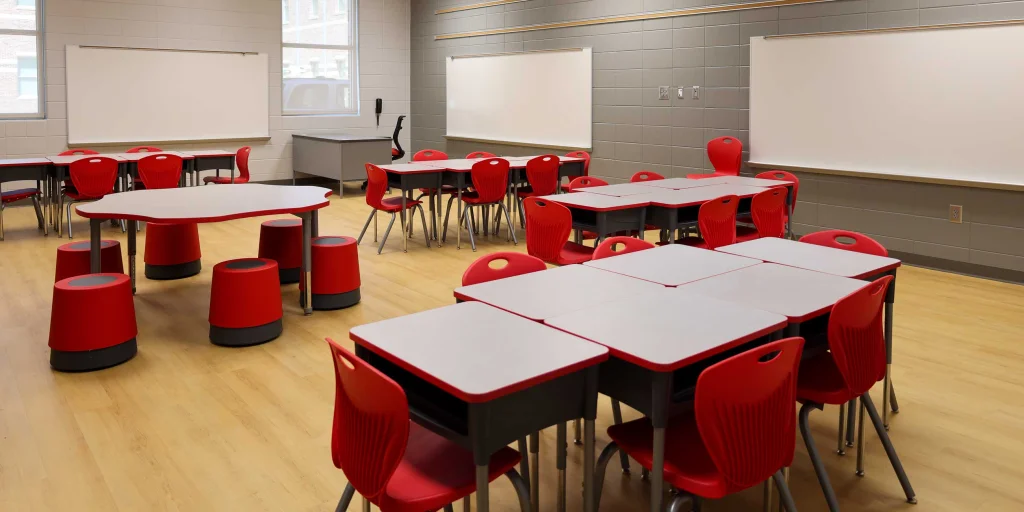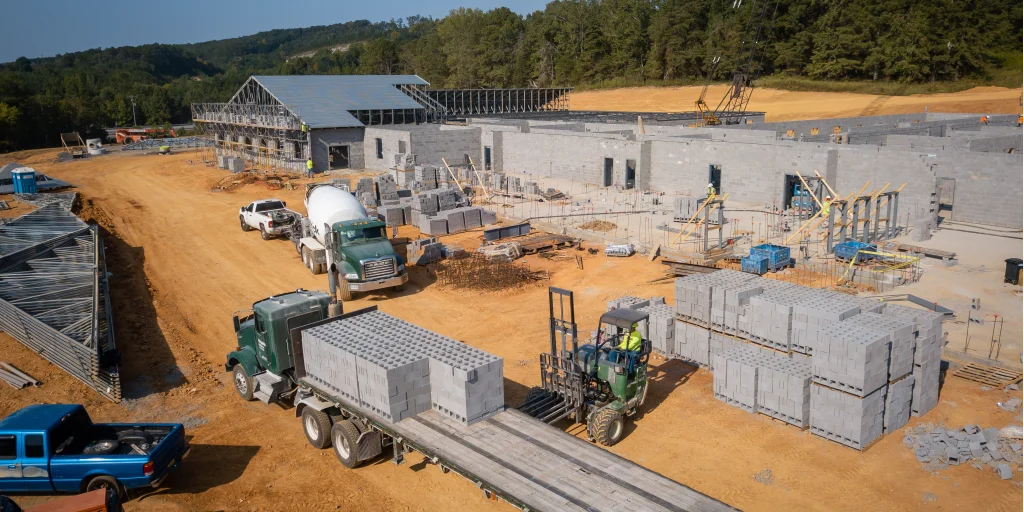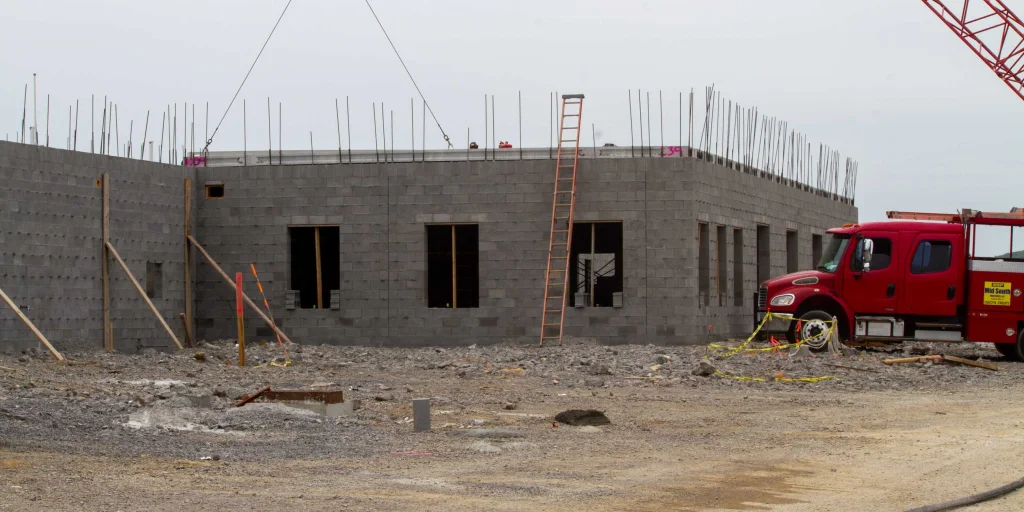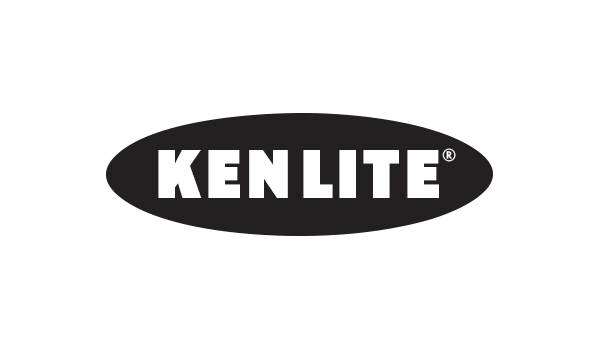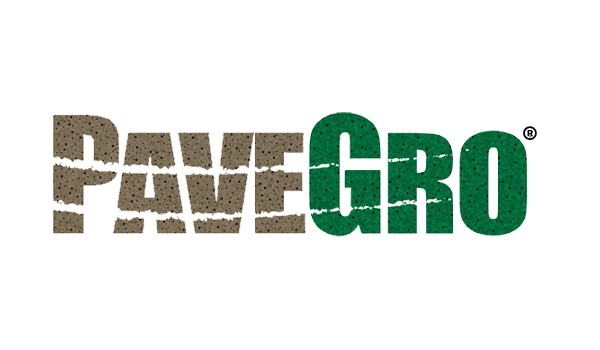Key Insights:
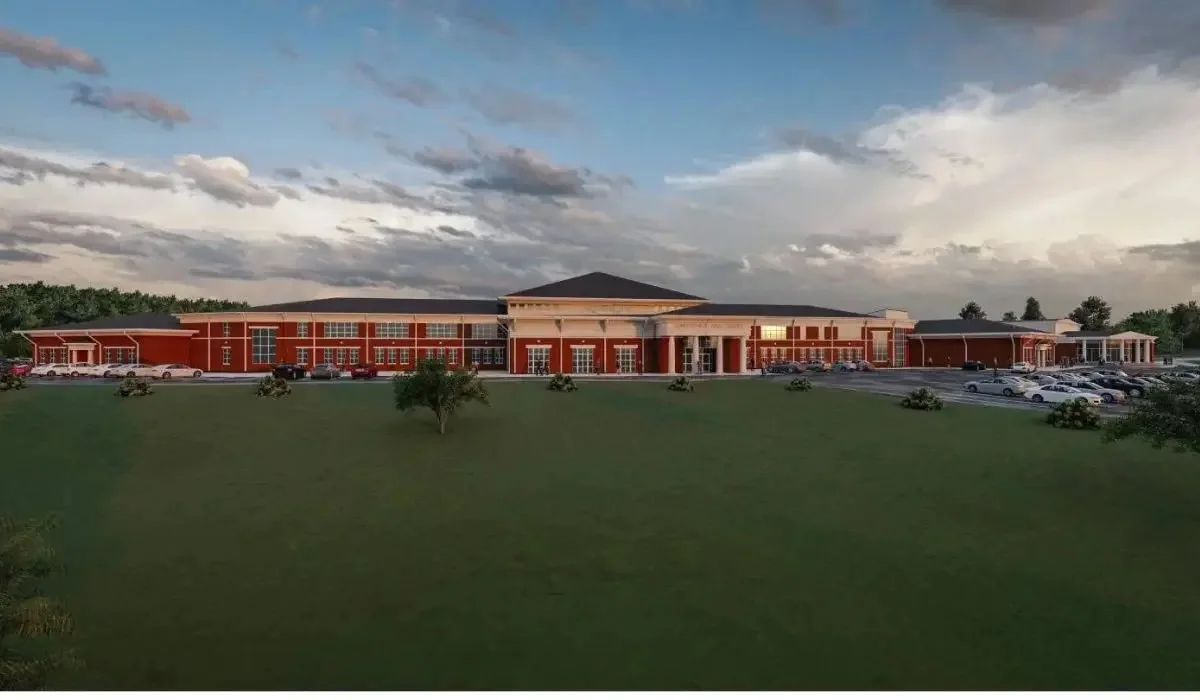
Quick Facts
- Name: Guntersville High School
- Location: Guntersville, Alabama
- Customer: Kirkpatrick Concrete, North Division
- Client: Guntersville City Schools
- Size: 175,000 lightweight CMUs
Challenge: Building a safe, durable high school in a tornado-prone region, ensuring student safety while meeting construction timelines and sustainability goals.
How Arcosa Helped- Our Solution: Supplied lightweight aggregates to Kirkpatrick Concrete for use in the production of 175,000 lightweight CMUs. These CMUs were crucial in the construction of a tornado-safe section of the high school.
- Why Lightweight Works: Lightweight CMUs increase productivity for masons, provide superior fire ratings, and offer numerous durability and sustainability benefits.
Final Results
- The reinforced lightweight CMUs ensure the school’s tornado-safe section can protect students and staff during severe weather, and the use of local materials earned LEED certification points.
Key Quote
“It was one of the best materials they could use. You see block in a lot of institutions and schools, especially when you are looking for sustainability.” – Spencer Glassco, Guntersville Block
Context:
- Considerations: Lightweight CMUs provide enhanced structural safety, particularly in areas requiring storm shelters, while also offering sustainability benefits. This is part of a growing trend toward energy-efficient, durable building materials that also reduce construction time and labor costs.
- Lesson to Learn: Safety features such as tornado-safe sections are increasingly in demand, particularly in areas prone to severe weather. The use of reinforced lightweight CMUs proves effective in creating storm-safe environments without compromising on cost or construction timelines.
Explore Further
Interested in how Arcosa’s lightweight aggregate can benefit your next project? Contact us today for a consultation.
Building for Safety: Lightweight Block Protects Guntersville Students
As Guntersville, Alabama prepares to open its first new high school since 1969, Arcosa Lightweight and its customer, Kirkpatrick Concrete, North Division, are playing a key role in ensuring the new facility is built to last and, most importantly, to protect students and staff.
Situated in an area prone to severe weather, the decision to use lightweight concrete masonry units (CMUs) was crucial for enhancing safety, durability, and sustainability.
Given the local weather risks, storm safety was a top priority in the design of the high school. Kirkpatrick Concrete, using lightweight aggregate from Arcosa Lightweight, produced the CMUs for the school’s walls, including a reinforced storm-safe section. This critical area is specifically designed to shield students and staff during extreme weather events.
The double-height walls of the storm shelter section of the school are constructed from 12-inch lightweight block, reinforced with #7 rebar and fully grouted.
Matt Herbert, Vice President of Operations at Thrash Commercial Contractors, describes the storm shelter as the strongest one he’s ever built. “The school, divided into seven different sections, features a whole section—the band room and the choir room—that serve as a storm shelter capable of housing the entire school.”
These CMUs, reinforced with structural materials, are designed to resist high wind loads and debris impact, making them essential in storm-prone areas. The storm shelter design using CMUs, as detailed by the Concrete Masonry and Hardscapes Association (CMHA), is crucial for providing protection during violent storm events.
Additionally, a solid poured concrete beam, with a steel insert—known as a wind beam girt—runs around the walls, which feature embedded steel plates welded to the beam.
Additional Lightweight Block Benefits
Spencer Glassco, General Manager of Kirkpatrick Concrete’s Northern Division, emphasizes the additional long-term benefits of using lightweight CMUs, explaining that when you look at maintenance costs and heating and cooling costs, block stands the test of time.
In addition to the other attributes the lightweight block brings to the project, Glassco says the fact that the block and concrete were sourced locally “helps them gain LEED points for the project and the green initiative”. The school’s floors are concrete, with slab-on-metal-deck used on the second story of the school. “We used some microfiber to replace welded wire mesh, that sped up construction and helps with crack control.”
Construction Challenges
To avoid disruption, the new school is being built around the old school, which is still in use. When the new school is complete, the old facility will be demolished and become a courtyard for the new school.
Herbert said that has posed considerable challenges. “We have the existing school on one side of the site and a 60-foot grade change on the other. We have to shut down one end of the site twice a day when the kids are coming to school and going home. We also have to shut down for football games and other events. One section of the new school is probably 25 feet from the old one. We had to be real careful not to undermine the foundation of the existing school when we were putting in the new foundation.”
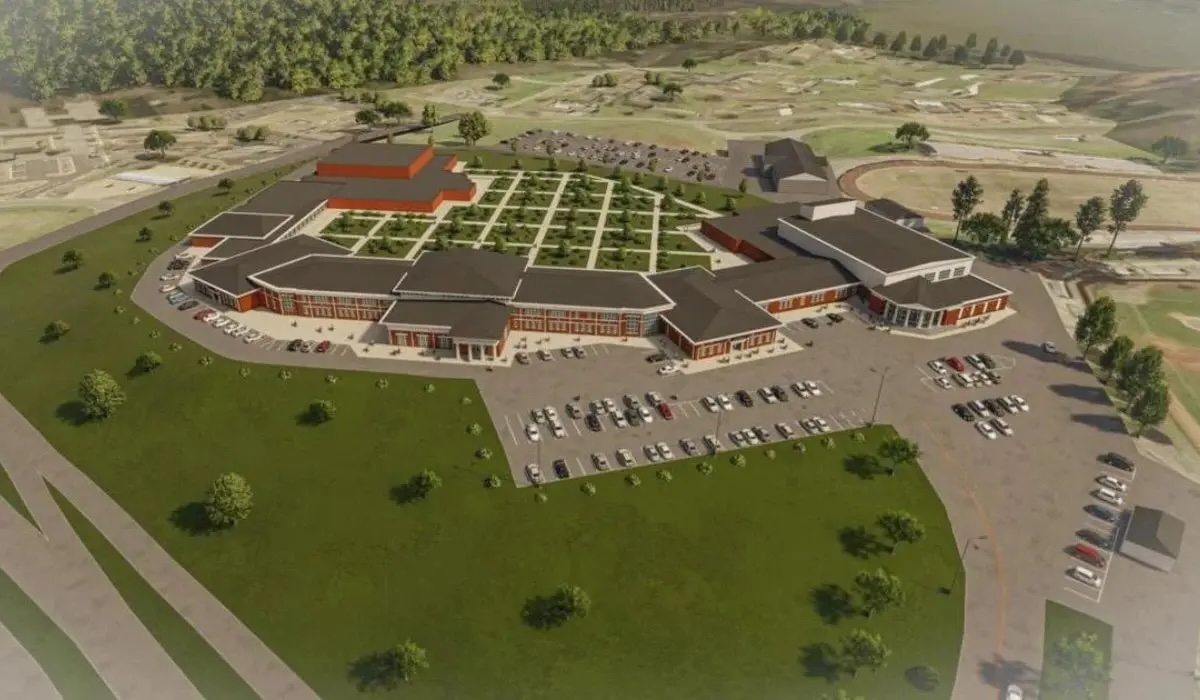
As Guntersville High School prepares to welcome students, it will not only provide a modern learning environment but also serve as a safe haven in the event of severe weather. With the durability and efficiency of lightweight CMU, the school is built to endure the test of time while ensuring the safety of its students and staff.
Glassco summarizes the advantages of lightweight block, saying, “It’s a sustainable product that has stood the test of time. And in all of our schools now, there is some form of tornado-safe section. That’s one of the things we’re proud to be part of.”







